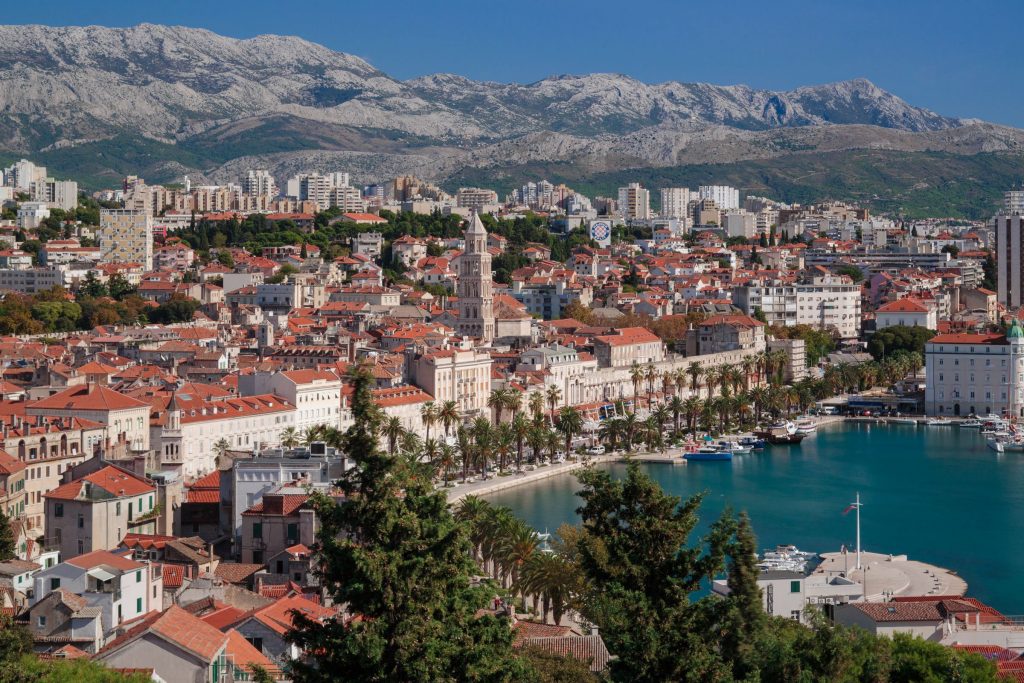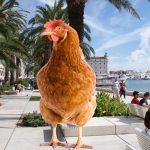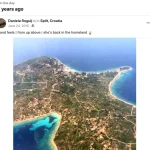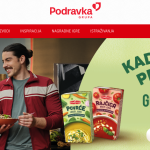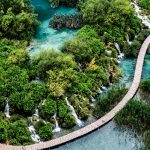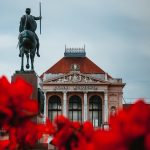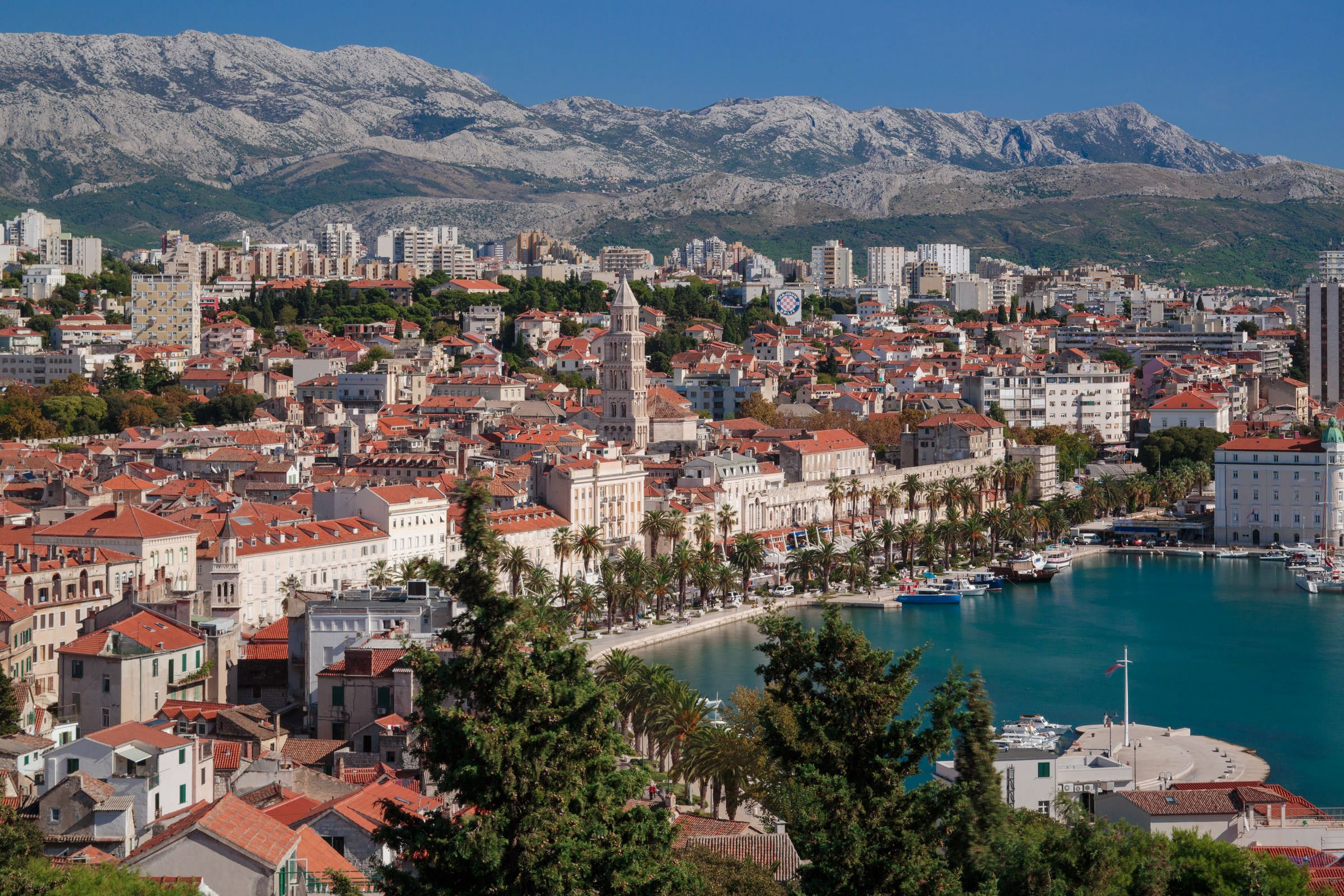
Continuing our series on November 12, 2017, where is the best place to live in Croatia? The case for this year’s tourism champion, Split.
I made the journey from California to Split (via London) roughly two and a half years ago. Although it was a move I never imagined in my wildest dreams, in my 27 years on this planet, it was the best decision I made.
It all started back in California. I was born and raised in San Diego to a mother from Metković, a father from Split, a grandmother from Stari Grad and a grandfather from Trogir. Christened in a Croatian church in San Pedro with the staples of sarma every Christmas and lamb on a spit at Easter, Croatia and its customs were never out of sight. And because most of my father’s family had moved from Croatia to the States, I was brought up more Croatian than American, in the end.
I was lucky to visit Croatia most of my summers growing up, staying for just over a month while we frequented friends and family from Trogir to Dubrovnik. Dalmatia quickly became my second home.
But while I would consider Dalmatia to be my second home, I never, ever considered living there. Sure, in the summer months when the sea sweeps you off of your feet it is a dream, but I wasn’t interested in getting to know Croatia once the euphoria of the summer ended. As far as I was concerned, the fun in Croatia stopped once the seasons changed.
After six years in San Francisco, a short stint in Nashville, and inching up to 24 years old, I was given an opportunity to move to London. Without hesitation or batting an eye, I was on a plane to England weeks later. I think it’s safe to say that most anyone my age would jump for it, too.
Knowing then that when I made a move to Europe, there was no turning back, I was tasked with the painful process of how I, an American citizen, would find a way to stay there. Lucky for me, both of my parents were born in Croatia – unlucky for me, they never thought it necessary for me to have Croatian citizenship.
“An American passport is good everywhere, right?” Wrong. I guess they never imagined a move back to Europe, either.
After dozens of visits to Croatian embassies and consulates, and countless phone calls to Washington D.C., it was decided that for me to begin the process of obtaining my Croatian citizenship, I would need to have my American birth certificate amended. My last name, Rogulj, was misspelled (“Roguli” – just imagine the pronunciation in America, too). Why my parents never thought to change that either, is also puzzling.
“Your American passport and Social Security number have the correct spelling; we didn’t think it mattered.” The things you learn as you get older.
A birth certificate amendment required a trip back to the USA, and what was supposed to be a three-week trip lasted three months. Without getting into too much detail, after I successfully filed my paperwork for the amendment change in California and made the trip back to London, I was ‘temporarily removed’ from the United Kingdom. Because I had no paperwork proving that I was in the process of obtaining EU citizenship, and I was just about up on my six months in the U.K. as a US citizen, immigration was not so kind. Back to the States, I went, and during my three months of contemplation in California, my parents decided that a move back to Croatia seemed like a good idea.
Somewhat of a shock but more so a relief, my parents settled in Split – my father’s birthplace and the city my mother moved to at 16. Split is also the city the two of them met nearly 35 years ago. After they found an apartment overlooking the Adriatic just before the summer season was to begin, I booked a flight from Los Angeles to Croatia weeks later to begin my citizenship process there.
Sure enough, a quick trip to the police station in Split provided me with all the information I needed, and some two weeks later, I was a Croatian (and EU) citizen. My eyes, at this point, got a whole lot bigger.
With zero intent on staying in Croatia apart from that summer, I had dreams of conquering Berlin, Copenhagen, and even trying my hand in London again. What I knew for sure, though, was that I wasn’t staying in Split. But that was only until the summer came to an end.
Something changed in Split the summer of 2015. There was a boom in restaurants, bars, and shops, and nightlife didn’t only extend as far as Bačvice. Experiencing somewhat of a new renaissance, Split was no longer just the port city I remembered it to be – Split was becoming a real international destination.
It didn’t take long after to realize what a fool I would be not to see this city evolve, and here I am two and a half years later writing to you about why Split is the best place to live in Croatia.
Here are my thoughts, in a nutshell.
Location, location, location.
The second-largest city in Croatia and the capital of Dalmatia, it’s not hard to see why Split is an intraregional transport hub. Situated on the Adriatic coast, Split is the central point for visits to the islands of Brač, Hvar, Šolta, and Vis, with Korčula not far out of sight. Dubrovnik is just 3 hours south down the coast, and the ancient Roman aqueduct of Salona is visible on your drive to the Split Airport. The UNESCO World Heritage Site of Trogir is just 30 minutes away, and you can enjoy soparnik, part of Croatia’s intangible cultural heritage, less than an hour away in Omiš.
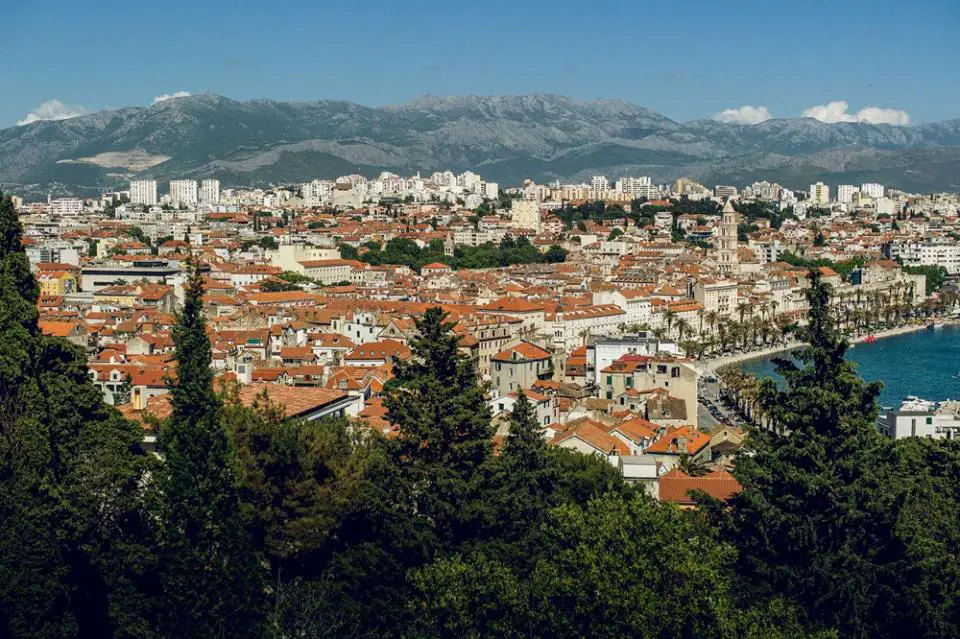
Game of Thrones fans can reach the fortress of Klis in less than 30 minutes, and Nature Park Krka and Šibenik can be seen in an hour. Hikers can enjoy Mosor mountain, part of the Dinaric Alps, in 40 minutes, and you can arrive at the towns of Inland Dalmatia in less than an hour. Mostar in Bosnia and Herzegovina is just two hours away, Italy can be reached in 10 hours via an overnight ferry, and Split’s Airport can connect you to hundreds of destinations. From Split, you can go anywhere.
History is all around you.
Emperor Diocletian had the right idea when he decided to retire in Split, and his palace, built at the turn of the fourth century, could be the eighth wonder of the world. From the narrow alleyways to the picture perfect Peristyle, the sounds of Klapa echoing from Vestibule, the 3500-year-old granite sphinxes Diocletian brought over from Egypt, the Cathedral of Saint Domnius, the Temple of Jupiter, and the cellars of the palace; history encompasses you with every step you take.
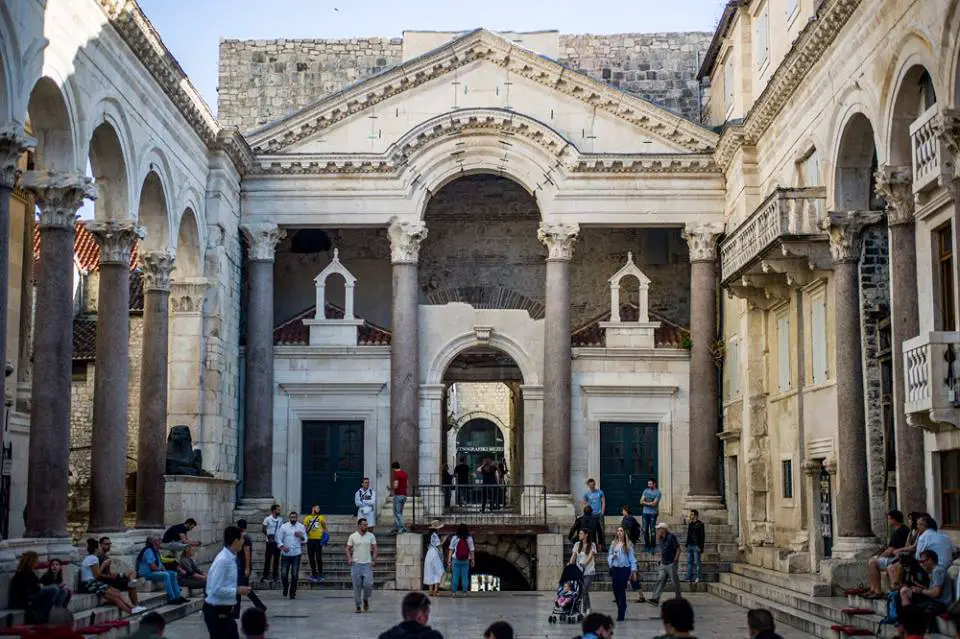
The history extends beyond Split’s core, and the city’s neighborhoods have bragging rights, too. The neighborhoods of Veli Varoš and Lučac are known as the ‘historical sandwich’ of Split. Radunica, the main street of Lučac, saw inhabitants some 500 years ago, and Varoš, situated below the green lungs of the city (Marjan), was settled by farmers and fishers seeking safety from the Ottomans.
The ancient history of the city is exhilarating, and a walk around Split’s center is bound to induce chills.
Hajduk lives forever.
“Only God and Hajduk live forever.” This is a saying you’ll hear often around Split, and once you’ve stepped foot in the city, it’s not hard to see why. My love for Hajduk began long before I made a move to Split. My grandfather, a sports writer for Slobodna Dalmacija, was ultimately responsible for the addiction, which continued long after my family left Split and would host Hajduk footballers in their New York City living room. My father’s love for the club quickly followed, and I grew up with Hajduk keychains on our car key rings and pendants hanging from our rearview mirrors for as long as I can remember.
Hajduk, in Split, is a religion. Nothing seeps through the city walls more than Hajduk, and the burning love for this football club has passed through generations since it was founded in 1911. I think it’s fair to say that Hajduk is the beating heart of this city, and the allegiance to the club stretches far from Dalmatia.
I have taken a fair share of international friends to games at Poljud, and from the minute they hear Torcida thundering through the stadium stands, a spark of magic hits and they become a Hajduk fan forever.
Born a Hajduk fan, live a Hajduk fan, die a Hajduk fan. Where else can you see such bona fide passion for a football club?
It is the sports capital of Croatia.
Did you know that Split has borne some of the greatest Croatian athletes to date? Take Toni Kukoč for example, one of the first established Europeans stars to play in the NBA. A three-time NBA champion with the Chicago Bulls and the NBA Sixth Man of the Year, Kukoč also won the silver medal for Croatia at the 1992 Summer Olympics in Barcelona. And what about Goran Ivanišević? The only winner of Wimbledon as a wildcard, he is the single Croatian tennis player ever to be ranked number two in the world. Blanka Vlašić, Croatia’s best high-jumper, is a two-time World Champion with silver and bronze medals at the Olympics, to boot.
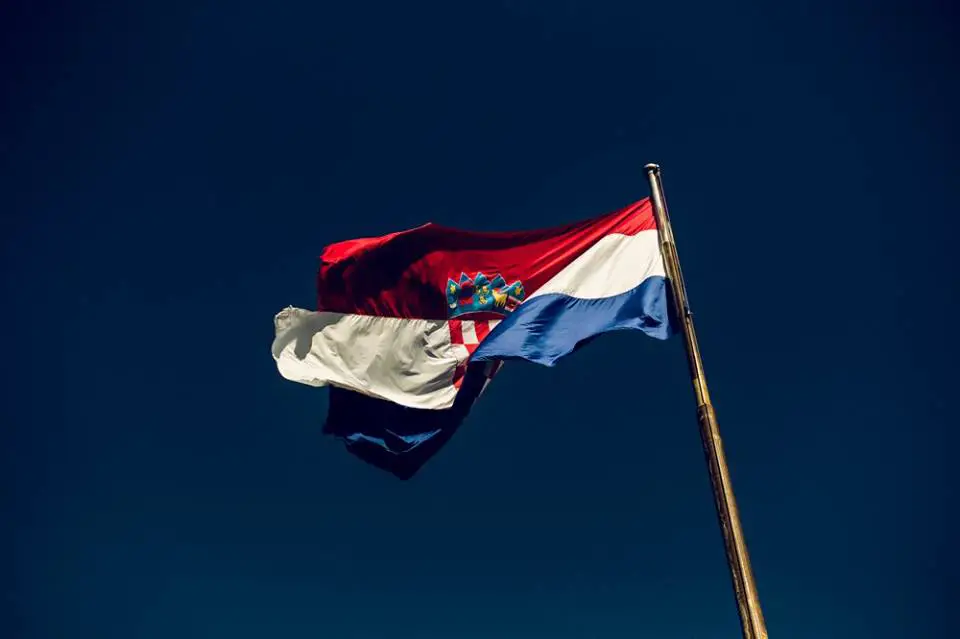
If you need more convincing of Split’s sports talent, you can always take a walk along the West Coast to see over 70 plaques dedicated to Split athletes who have won Olympic medals.
Our markets and the characters behind them.
Split wouldn’t be the city it is without its markets, one of the unofficial symbols of the city. From the fish market to the green market, a significant part of how Split people live their day to day lives is determined by what is available at said markets. One of the favorite conversations to have in the city is focused on what will be prepared for lunch, and if the markets don’t have the freshest of what you’re looking for, the course of your entire day must change.
While we can enjoy the fruits of Dalmatia at these beloved markets, what I have personally grown to love are the characters behind the stands.
“Come here, dear, don’t you want to buy from Grandma Vanja?” they’ll say, and without fail, I’ll buy something just because of their candidness. If you want to see the heart and soul of Split, there is no better place than the markets.
“Ništa contra Splita”
Nothing against Split, Dino Dvornik sang in 1996, and when it comes to Split’s music scene, nothing reigns truer.
The city of Split is not only responsible for the Croatian king of funk, Dino Dvornik, but for Croatia’s most innovative hip-hop group TBF, rock band Daleka Obala, pop queens Severina and Doris Dragović, and regional favorite Gibonni. Let’s not forget that Oliver Dragojević, one of Croatia’s musical icons, began his music career in Split.
https://www.youtube.com/watch?v=v=MxSgitmq5M0
Today, Split hosts one of the largest electronic music festivals in the world, Ultra Europe, and one of Croatia’s premier music events, the Split Festival, has been held since 1960.
The Riva is a runway, and dressing up is mandatory.
Split’s famous waterfront promenade, the Riva, sees some of the city’s best fashion. A runway of sorts, any day of the week, you can find Split’s best-dressed citizens strutting the latest trends and creative combinations here. What I find truly beautiful, however, is that in Split, fashion has no age. From newborns to stylish grandmothers, there is a place for all shapes and fashion trends on Split’s Riva.
Coming from America where yoga pants and jumpers were standard when doing your coffee runs, the fashion tastes of the Riva, while intimidating at times, is a nice change of pace.
3-hour coffee breaks are acceptable…and encouraged.
“Does anyone work in Split?” Friends and tourists have asked me this question on more than a few occasions, and it usually has to do with the fact that cafe bars around the city are full of people at all hours of the day. We take our coffee breaks seriously in Split, and it is comforting to know that 3-hour coffee breaks will never be frowned upon. Coffee doesn’t always have to mean coffee, though, and after you’ve had a few cups, you’ll usually switch to beer or a glass of wine.
A time to socialize with friends, people watch, discuss politics, read the newspaper, or just be, this is one of my favorite aspects of the Split mentality – and with the constant transformations the city endures, this is something that will never change.
Split is safe.
After living in San Francisco for six years, to say that Split is a safe city is an understatement. Having to walk around the somewhat hairy streets of San Francisco with pepper spray in tow is no walk in the park for a girl in her early 20s, and running to the steps of my front door in fear started to get old.
What a breath of fresh air it is to be in Split. Having done a walk of shame or two coming home from Kuka at 5 am, the only pestering I’ve encountered at that hour are guys in need of a cigarette, and sometimes, people just want to know your story.
Children in Split can walk to school from an early age, without hesitation, and if you’re ever in fear, you can always depend on the trusted surveillance of Baba watching you from outside her window.
Sun is shining, and the weather is sweet.
I’m spoiled with the weather coming from California, but I’m lucky that in Split, it’s not so much different. While the summers are warm, er, boiling hot, the seasons in Split are delightful.
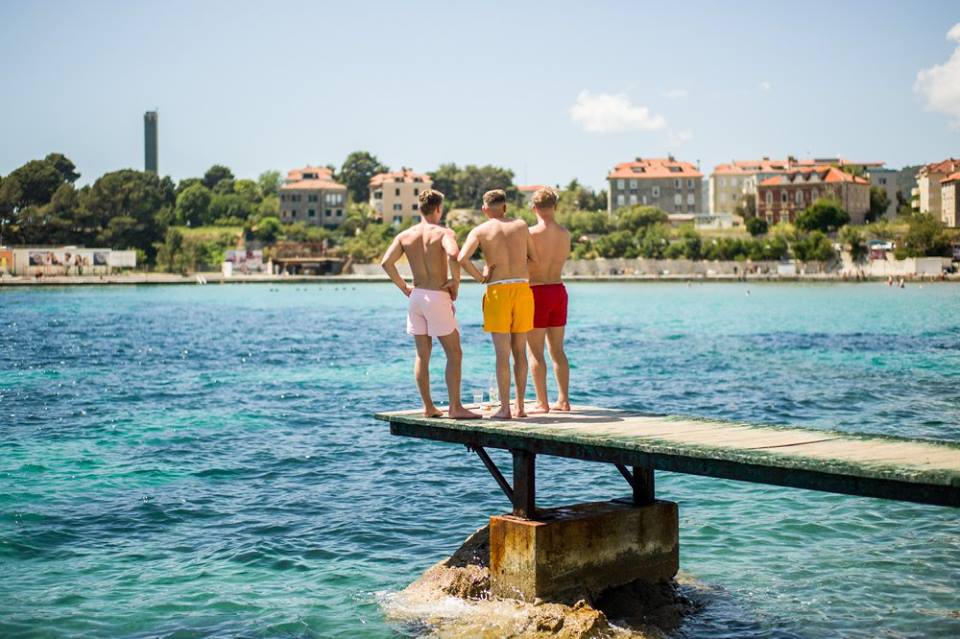
Though January and February can see rain and blistering bura winds, the spring welcomes the sun and pleasant temperatures. You will find brave souls swimming as early as April and as late as November, and if we experience another Indian Summer like this year, October is the perfect time to visit. The December months I’ve spent in Split see the sun, though they tend to be a bit cold – but fortunately, for you, that is something a mulled wine from the Christmas market can cure.
“But aren’t you bored in the winter?”
If I had a penny for every time I was asked how I managed the “dull” Split winters, I would be a wealthy woman. The funny thing, though, is that the winters here aren’t boring at all. Partial to the quiet winter months now over the busy summer, it’s incredible to me that some people in Split believe that one could actually be bored here in the offseason. While some restaurants and bars are closed for much-needed rest and relaxation, Split still has so much to offer. Many of Split’s cherished nightclubs and bars open only for the offseason and the city becomes a sanctuary for live music lovers during these months. The bars are packed with locals, the restaurants create enticing new menus geared towards homemade classics, and the Riva never stops working.
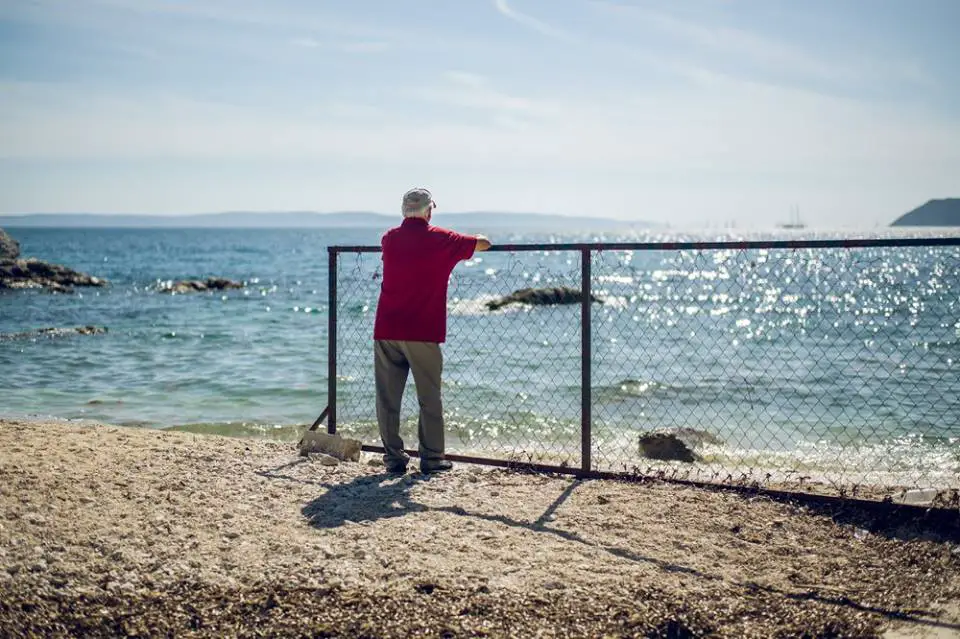
December is alive with Advent, and the citizens, now well-rested from a grueling summer, can finally sit back and enjoy. What is there not to like?
Two and a half years later, I’m still faced with the question of whether I live in Split full-time (“You’re here just for the summer, no?”), why in the world I would leave California (it’s not all butterflies and rainbows, I promise you), and how soon I plan on returning to the states. Maybe the people of Split don’t realize just how good they have it, but to me, there is no better place in Croatia to be.
Photos by Matthew Christopher Miller

